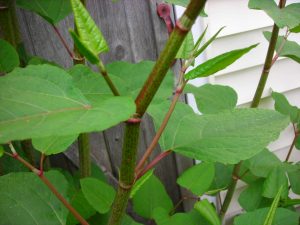Culturally Responsive Curriculum Standard C: A culturally-responsive curriculum uses the local language and cultural knowledge as a foundation for the rest of the curriculum.
There are seven parts of this cultural standard, but I’m going to focus my reflection on the following two parts. A curriculum that meets this cultural standard: 1. utilizes the local language as a base from which to learn the deeper meanings of the local cultural knowledge, values, beliefs and practices; and 2. recognizes the depth of knowledge that is associated with the long inhabitation of a particular place and utilizes the study of “place” as a basis for the comparative analysis of contemporary social, political and economic systems.
- I really appreciate how much Tlingit language we have been exposed to through this class. We have listened to expert speakers, we have watched young people use the language, and we have learned about the connections between language and culture. We have seen that this language is vibrant and very much alive. During our group project David mentioned how he would like to do a Tlingit word of the day to teach us as a class and I really like that idea! I also think it’s something we could easily incorporate into a classroom throughout the year, especially since there are recordings of Tlingit available online, dictionaries, and even these cool videos with puppets from 1969. It would be great to have an Elder join the classroom and help us work on Tlingit language, but that might not be an option daily.

- Thinking about rooting a lesson in place makes me think of Paula’s lesson on Japanese Knotweed. You could teach a lesson on invasive plants simply by reading about them in a text book, but would it really be memorable? I grew up in Douglas and when Paula showed us the map of where the invasive plant grew, I could picture the patches in my former neighbors’ yards. My best friend and I used to build tunnels through the knotweed by lashing the tops of it together with grass. Some of the most important meetings about the latest elementary school drama were held within the walls of this invasive plant. This lesson helped me reexamine something that I thought I already understood. I was encouraged to reconsider it, examine it, and think critically about this plant and how it arrived in Alaska. Paula’s students got to observe the plant in the wild, record data about it, and learn (or solve the mystery!) of how it got to Douglas. Through interdisciplinary lesson “place” seemed to be the glue that held science, math, history and language arts together. I have learned so much in this course about how we we can meet curriculum standard C and teach many complex topics using the resources and knowledge right here in Juneau (or whatever community you’re working in!)
Electra,
Paula’s projects, her engagement with her students, and with the community showed us valuable qualities of being culturally responsive teachers. Thank you for sharing your own memories about the Japanese Knotweed.
I think using the local languages to describe things is really, really important as you pointed out. Why do we keep learning the Latin ways to say things, when the language is dead and from some far off place? Plus it’s a great way to get kids to remember things!
Right on, Electra, I have been thinking of ways to have the Tling’it language, their cultural bearers and Elders more evolved in the classroom. Having the Tlingit place names/map in class for periodic study could be a great way of broadening our understanding of the the Tlingit language especially with the guidance of an Elder and/or Cultural Bear to help pronounce the words. There is so much vocabulary in their place names. Just thought I’d share something that popped up the other day during our break. David and Joe walked me through a few words of the Tlingit place name map- breaking down a few of the sounds. There could be a lot of knowledge/language gleaned on a daily basis that relates directly to place. Thanks for posting your great ideas!
Thanks for sharing Electra, I really appreciate the imagery you showed in your childhood and how the knotweed assignment provided for a personal reflection.
I think the mistake that I often make is thinking that place-based knowledge is something simply rooted in the past and distanced from my ability to understand. Paula’s lesson on knotweed, however, showed me that the hidden history of Juneau, is a treasure trove to be tapped into, showing that objects/plans that are so common to our senses now, may contain a deeper meaning to this land and its history. I agree with you in that this project may make students critically examine and reconsider their surroundings. I would love to find other opportunities to make Juneau a fun experience for the students (especially for those who have lived here all their lives and may feel trapped)